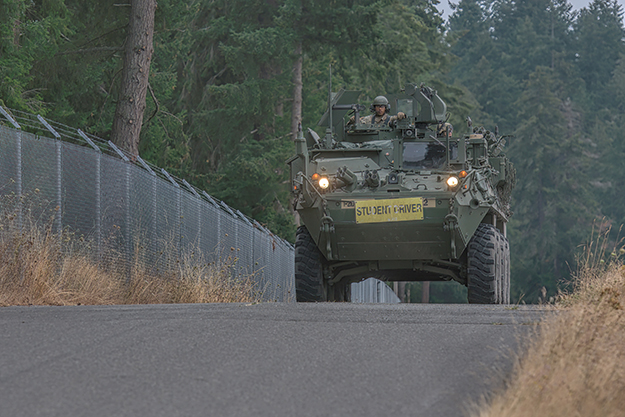The new DVHA1 Stryker is an example of the Army's commitment to force modernization.
By maintaining its superiority over any adversary by providing force with the speed, range and cutting-edge technologies, the DVHA1 is vital to the success of any near future fight while preparing for the demands of a distant battlefield.
Joint Base Lewis-McChord's 1st Brigade, 2nd Stryker Brigade Combat Team (SBCT), 7th Infantry Division is leading this modernization process. This third generation Stryker offers major improvements in mobility, survivability, power and network interoperability.
"The process began with the planning and preparation, which started in 2021, (when) we started working with the I Corps and 7th Infantry Division Force Integrators as well as the fielding teams and training coordinators," explained Maj. Noah Snyder, 1-2's Force Modernization Officer.
The brigade's fire support officer, Snyder also ensures that the brigade remains focused on its multiple lines of effort - preparation for Combat Center rotation, Pathways exercises and other training requirements.
"Then the brigade began its force modernization window in April 2022 following our return and recovery from our National Training Center rotation 22-03."
The turn-in process from the old to the new Strykers involves the installation of ungraded communications equipment before the vehicle is turned over to the unit. At that point, vehicle crews go through Operators New Equipment Training, or OPNET, during which they are trained on preventive maintenance checks and services (PMCS) procedures, driving, recovery, communications and weapons system.
"The new equipment is put through its paces during these OPNETs, ensuring that the equipment is Fully Mission Capable (FMC) and ready for future training or deployment," continued Snyder.
Over at the Logistics Readiness Center, Pfc. Frantz Nelson and Spc. Henry Zamubio, both assigned to the brigade's 5th Battalion, 20th Infantry Regiment, performed an engine maintenance check on a new Stryker before engaging in more training.
"We've learned a lot of great things about the new Stryker, and it is very impressive," said Nelson as he inspected the 450-horsepower engine of a Mortar Carrier Vehicle (MCV) before heading to a training area, "and I'm glad that we now have these should we need them."
The brigade is also receiving the Infantry Carrier Vehicle, Infantry Carrier Vehicle-Scout, Fire Support Vehicle, Medical Evacuation Vehicle, Engineer Squad Vehicle, Anti-Tank Vehicle, Commander Vehicle, and the Infantry Carrier Vehicle-30mm.
"Upon completion in December 2023, 1st Brigade, 2nd Stryker Brigade Combat Team will have conducted force modernization efforts for over 15 months, and it will be the most modernized and lethal SBCT in the Army," concluded Snyder.
"Modernization brings our force greater mobility, increased firepower, and expanded protection. Ghost soldiers are receiving and being trained on the most advanced, most effective, and most capable equipment the Army has to offer."





Read Comments